- Bridges & Tremolos
- Electronics & Wiring
- Hardware
- Machine Heads
- Pickups
- Pickup Parts
- Pickguards, Knobs & Covers
|
|
|
Humbucker Covers - In Detail Last Updated: 18/01/2024 |
||||||||||||||
Covers - In Detail ExplainedThis article goes into a little more depth on the topic of covers, and, whilst the overview is, really, in relation to “The covers we fit to our humbuckers” – I’ve lifted a few of the articles sections from other products on the website (so there may be some sections that read as If we’re talking about “just covers” – the information is still true, don’t worry too much on it) Colours ExplainedI think this is a little bit redundant to be honest, because the site has the "smart swatch" system, which shows you how everything looks once you've assembled it, and whilst its a bit "too perfect", it is pretty accurate to what your going to get. However, i will concede that sometimes, real pictures of real things, can be helpful, so, heres another photo dump, detailing as many of the colours as i can. Covers 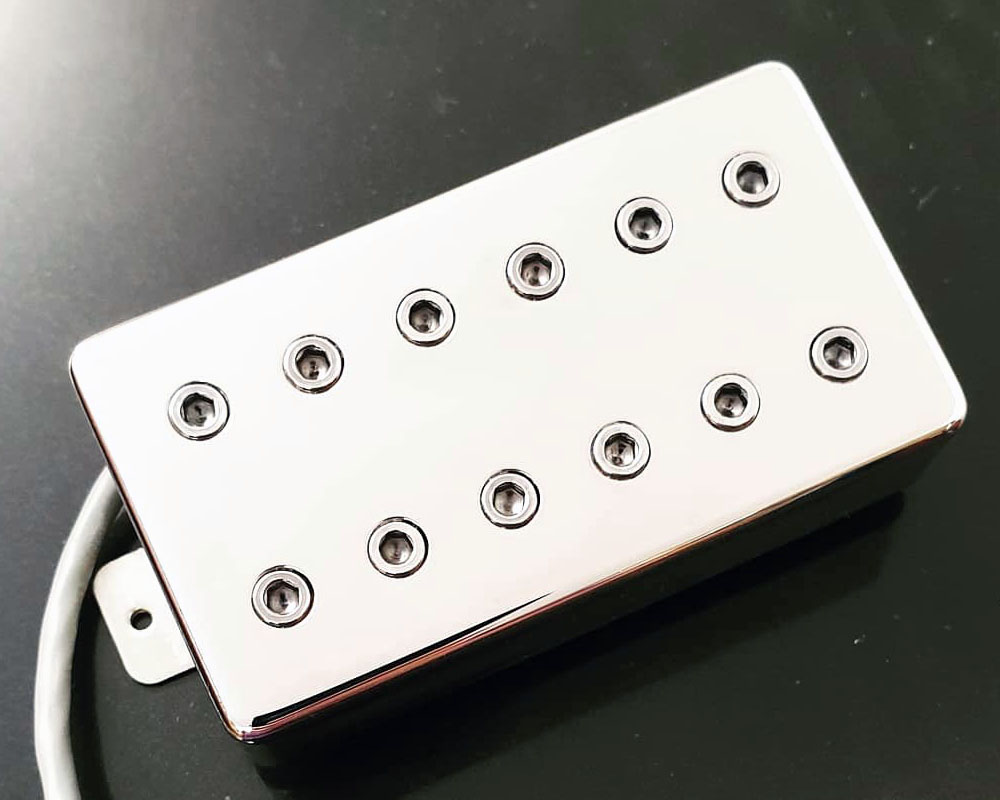
Nickel CoverNickel (importantly, WITH the copper underplate), is, essentially, a mirror finish - a slightly yellow/white tint to the "silver". 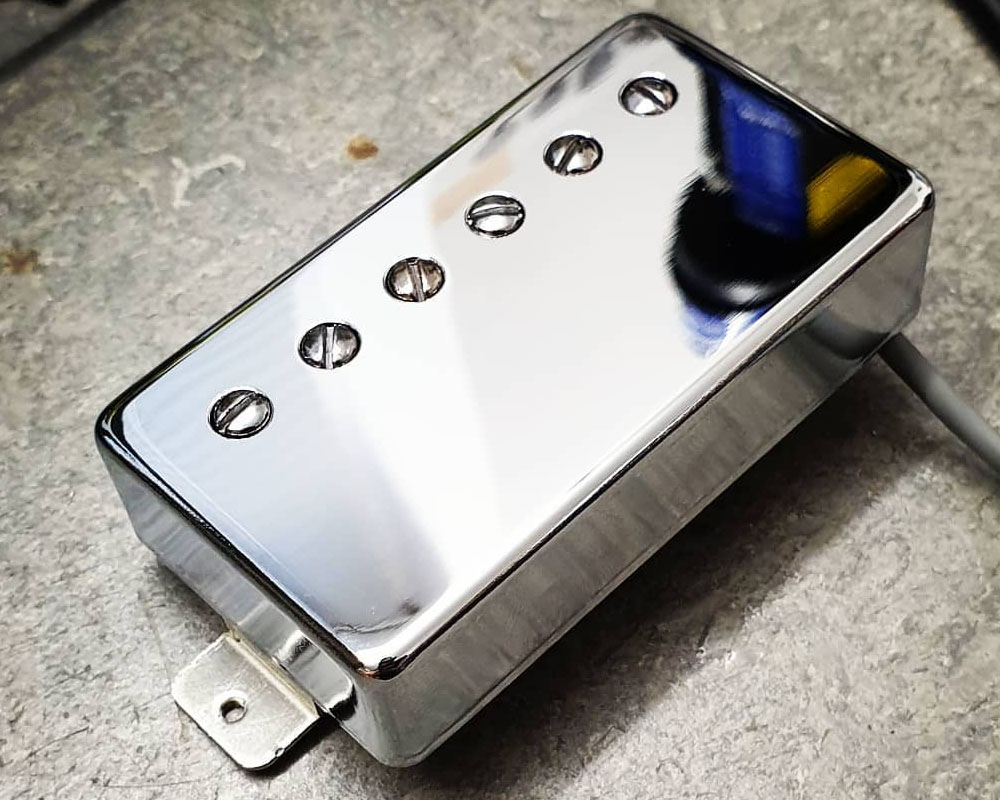
Chrome CoverSimilar to Nickel plating, but with a sligtly blue "tint" to the silver. Harder wearing then any other colour believe it or not, with better resistance to scratching and less reactive to sweat. 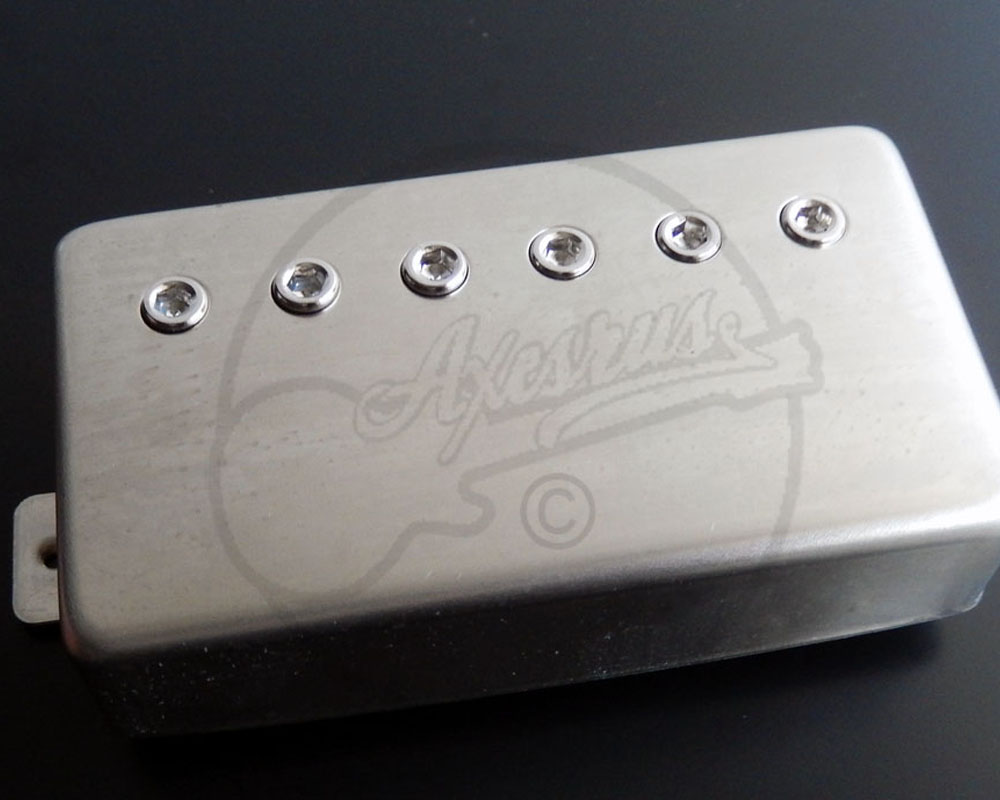
Raw/UnplatedThese are just the unfinished covers, no copper under plate, no electroplate, no polishing, as pure as they come! Just a shaped hunk of German silver, completely with tool marks from manufacture and scuffs from being handled and stored prior to us getting them. A nice little part to use as a "ready made" relic, but they can be polished up with a metal polish to a mirror shine. Without an electroplating, they age very quickly, so aftera year or two of serious playing, expect to see that zebra stripe pattern where you've hit the cover with your pick, but never under the strings. 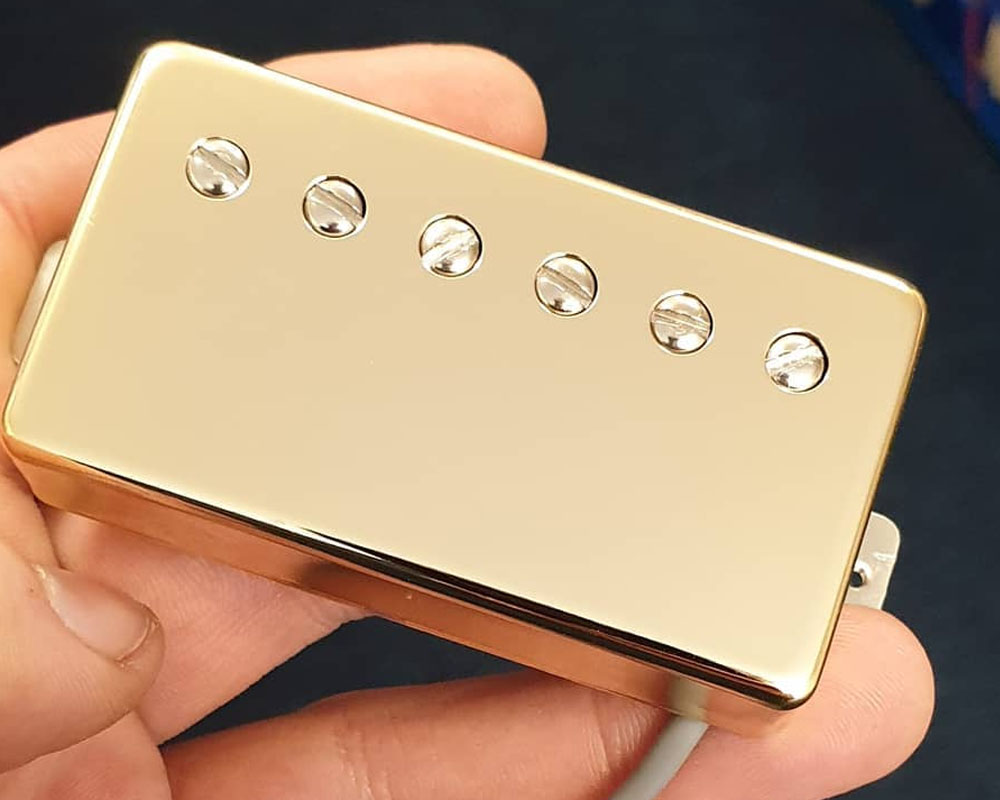
Gold CoverIt is what it is really. A fairly low karat gold is usually the case when it comes to plating (at least outside of jewellery) interestingly, the variation between different parts in gold comes down to the karat of gold used in the plating, the darker, more orange gold colours come from higher quality gold. Ours are fairly middle of the road "guitar part gold" to be honest. Worth nothing that whilst gold normally wont tarnish, it will get dirty, and cleaning gold plate is the very devil, because its soft and thin (we've all seem gold humbuckers where the platings rubbed off? That's why! Its not that its cheap gold, or "not gold" (granted, its low karat usually)) it's possible to just rub straight through most gold plate with a bit of force and abrasion. So go for gold (all gold, not just our humbuckers covers but anything gold plated!) with caution, itlooks great, butiIf its getting used and abused every day, it's going to show its age. 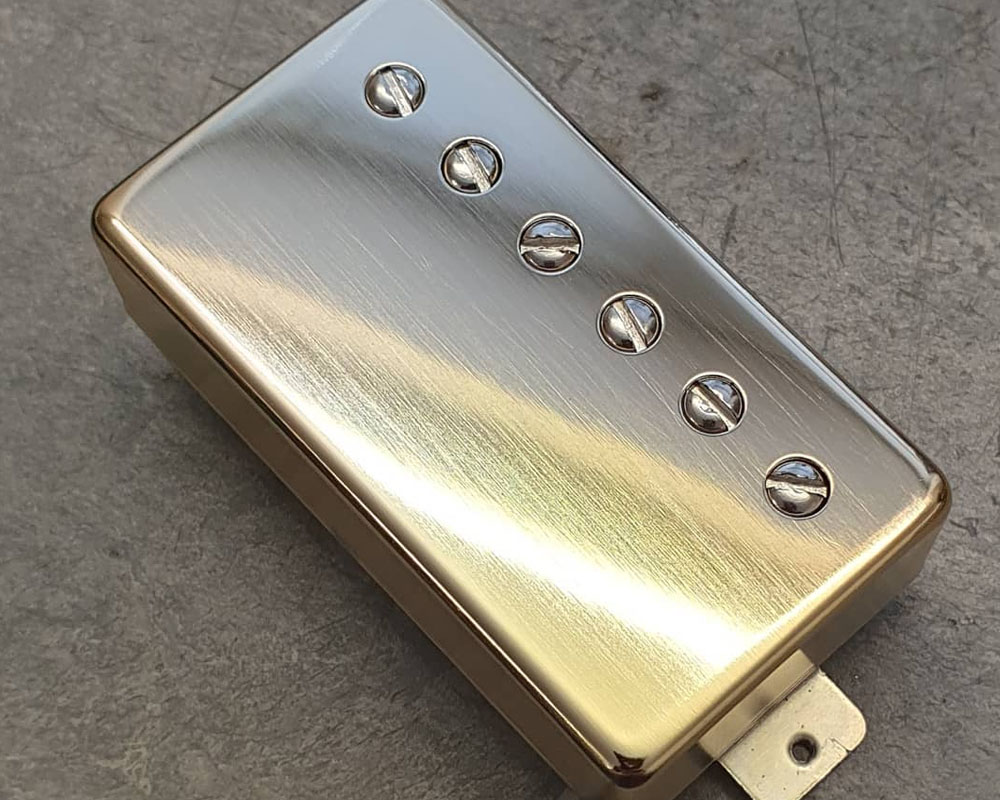
NO COPPER Nickel CoverWhilst "No copper" covers, tonally, sound the best - you can probably see from this photo why, cosmetically, we copper underplate! All of the "grain" of the nickel is peeking through that final electroplate layer, and making it look a little bit rustic. 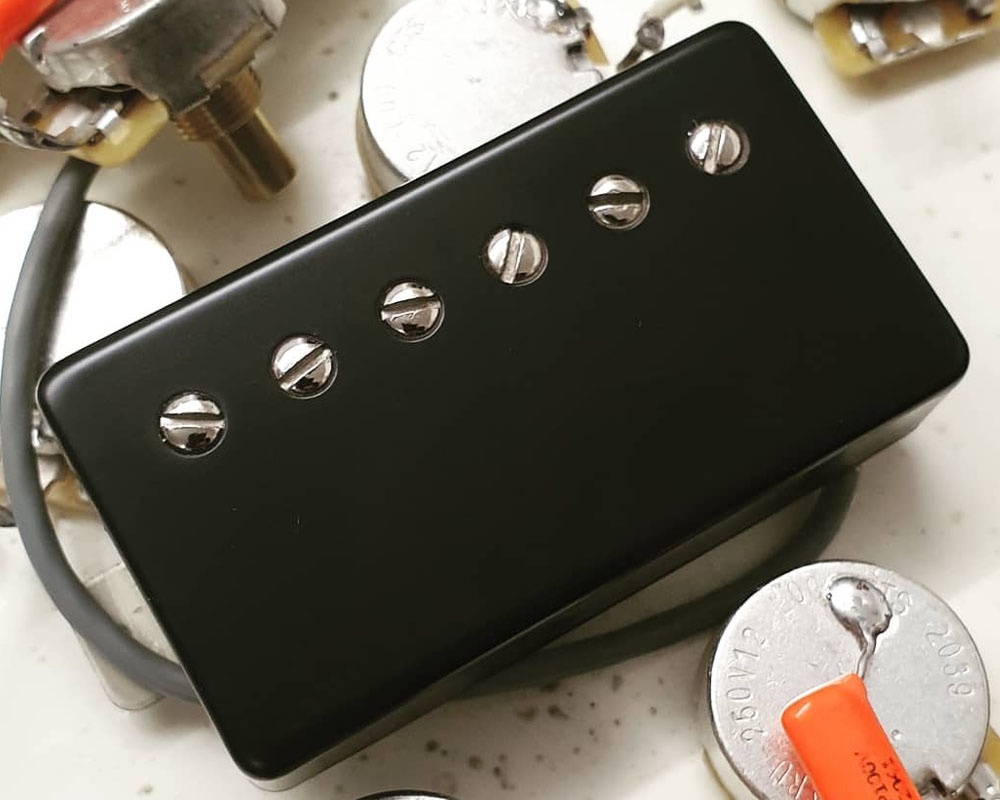
Black CoverBlack is Black, it's commonly thought to be powder coating or painted, but it is actually Electroplating (in a fashion anyway), and as such, offers all the benefits/drawbacks there within. It's actually a process that causes oxidisation of the base material (that copper layer) which is then converted into Cupric Oxide. Its not exactly common with humbuckers covers, but it looks fantastic as long as you keep it clean! 
Cosmo CoverI should have, honestly, written this about 9 years ago when we first stocking cosmo parts, but, better late then never. 
Distressed SilverHonestly, not my favourite finish for a cover... but maybe, because i dont like the name "relic" we informally use. It doesn't look like a relic from a bygone era, it doesn't look like its a cover thats 70 years old thats been loving cared for, but is showing its age. It looks fake. It looks artificial. 
Distressed CopperSimilar to Distressed Silver i suppose - but slightly more acceptable from where i'm sitting. It still looks false (even to the point where old copper doesn't look anything like this) - but, its actually pretty cool to me. Certainly not for everyone, but, might just be the thing your looking for. I'll go into a little more detail on some of the finer detail about some of the topics i've covered above. 
Raw out of the boxWhen I say "it’s as it comes from the factory", I can’t stress that enough - it’s a pickup cover that’s been plucked out of a parts bin before it should have gone off to electroplating. It’s not been polished, it’s not been tumbled, it’s not been smoothed, its not been handled with kid gloves… it’s a hunk of German silver. It looks like what it is. Scratches, scuffs, marks, grease, burn marks, small dents and burrs are all to be expected. 
Raw with a bit of ageAnd here’s where raw gets interesting for me – because its not electroplated, its essentially, open to the elements. Its going to be hit by a pick, rubbed at, bled one, soaked in sweat, scratted at with the hem of your T-shirt, and over a year or two (assuming you actually play the guitar!), very organically, its going to get polished into quite an interesting pattern. 
Brass-o doesn't ruin tone-o!Before I come across as the master craftsman here, I have to point out, I am NOT a polisher! The length and breadth of my experience pretty much starts and finishes with attacking my mother’s fireplace with a tin of Brasso as a kid, so, please, excuse my amateur attempt. 
Raw after a "real" polishAgain, I CANT POLISH – but I’ve attacked this cover with the buffing wheel, and a bit of gentle compound, and its come up to a pretty good mirror if you ask me. I’ve not removed all of the surface marks, or worked through the grits or put any real effort in, but I did want to show that unplated covers can be brought up to mirror finish if that’s what your going for. 
Dont mess about with Gold!Gold gets a bit of a hard time with guitar parts, and I’ve mentioned above, that its not exactly 24 karat stuff, but, on the whole, its OK, its definitely gold (rather then some substitute yellow metal - the bode plots prove that because its so conductive), and gold being expensive, it’s probably expected that its not plated on incredibly thick! Covers and Base Material I think I’ve covered pole spacing pretty well under the “pole spacing” header, so, whilst bases and covers are impacted by that aspect of humbucker “design”, I’ll gloss over it in this section and concentrate a little more on the impact covers and bases actually have on the signal being produced by the coils. Ace of Base
We can see from the above, that, really? There isn’t a great deal of difference between the two options (I’ve included “no base” too, for completeness’ sake). If anything, a brass base plate, compared to German Silver, isn’t actually sucking out any top end, its sucking out a little of everything up to the resonant peak, but past that, its comparable to German silver – so we’d perceive that, not as “sucking out top end”, in fact, the complete opposite, we’d hear that as the pickup gaining a little definition, and likely, being a shade brighter! However, it’s a fairly small change in that regard, its certainly not as drastic as we’d be lead to believe in the old “Brass bad/Nickel good” argument.
And we see something very interesting! Raw German Silver actually isn’t as bad as we think, is it? We’re still losing a fair bit of voltage at the peak, but no where near as much as we are with a copper underplate.
So that does give some credibility to the “brass bad/German Silver good” argument. I still can’t sit here and say “German Silver doesn’t affect the pickup”, but we can say that, if German silver covers aren’t plated/aren’t copper underplated, they have the least effect, the copper underplate has an impact, and brass is having a huge impact. Covers affect pickups. Its as simple as that. If you’ve got a humbucker you adore that’s currently uncovered? Chances are fitting a cover, regardless of material, is going to change it considerably. Now, to round this out before we get into the next part, it may seem that I’ve not covered all the angles here. I promise you; I have! I’ve just had to trim this down so it doesn’t turn into a dissertation – so, quick and dirty? “What I’ve missed” Cover material behaves the same regardless of base material. The characteristic changes from having either brass or German Silver as the base remains after the cover has been fitted, but the affect of the cover is unchanged (so a brass base plate will still suck out a little of the signals voltage before the resonant peak AND a Nickel cover will still do its thing – so, moving forward from here, we’ll just be focusing on German silver bases and covers, just to keep it stream lined) If this is all an expression of conductivity between coil and string, does the “colour” matter? It does! But only one with gold! And, the higher the grade of gold, the more it matters! To keep it brief (as brief as it can be and still contain a graph) – gold is more conductive, so gold plated covers have a greater impact on the pickup then Chrome/Nickel/black/etc (which, seemingly, don’t cause any more or less effect – even to the point of a Chrome plated/no copper cover behaving the same as an unplated cover!) Gold, however, does, arguably, sound worse!
So covers are bad?! Now this ones a very loaded question, and I don’t really have an answer for you to be honest. Electrically? If I was sitting here trying to sell you a Hifi, I’d definitely say that any, essentially, cosmetic component that altered the signal to as big an extent as a humbucker cover does, is a very bad thing indeed, however, guitars/pickups aren’t hifi! As holistic an approach as this might be, as much as this might sound like “feel good mumbo jumbo” – pickups, really, are more a case of “we like what we know” – and considering most of us will have heard humbuckers with covers (and I’d go further then that, most of us have liked humbuckers with covers, we’ve liked humbuckers with copper under plate, we’ve liked humbuckers without copper, we’ve liked humbuckers without covers and we’ve liked humbuckers with brass covers! We’ve liked humbuckers with gold covers!... you get the idea) – its just a case of horses for courses. As a very rough rule of thumb – covers are going to make the pickup feel more rounded, softer, and less defined. (and the more conductive, the greater that effect) – its not good or bad. Its just what it is. You might absolutely love the tone of a brass cover, you might hate it. It all depends on your frame of reference I’m afraid. Is this true for all specs of pickup? I’ve got partial graphs for this which prove the point, but I’ll spare you those. In short, yes – it doesn’t matter if it’s a humbucker wound with 42 AWG plain enamel or 44 AWG Polysol, it doesn’t matter if its 12 screw Alnico 5 or 12 slug ceramic, it doesn’t matter if the pickup cost £300 or it cost £3, it doesn’t matter if it’s a Telecaster® Neck or a P90 or a Strat® single coil you’ve buried under a humbucker cover -the cover is always having the same general affect. Sometimes it works in the pickups favour (Historically accurate humbuckers do sound better with covers!) sometimes it works against the pickup (Epiphone® Casino P90s, even with unplated covers, don’t sound quite right!) And I think that about covers cover and base material, in very broad strokes, but there is, I’m afraid, one more aspect to this. So, lets get it over with! Cover style With cover material and plating options seen to, I think its probably worth while taking a look at cover “style” too. However, from our point of view, and within the scope of this kit, its not really “true”. |





